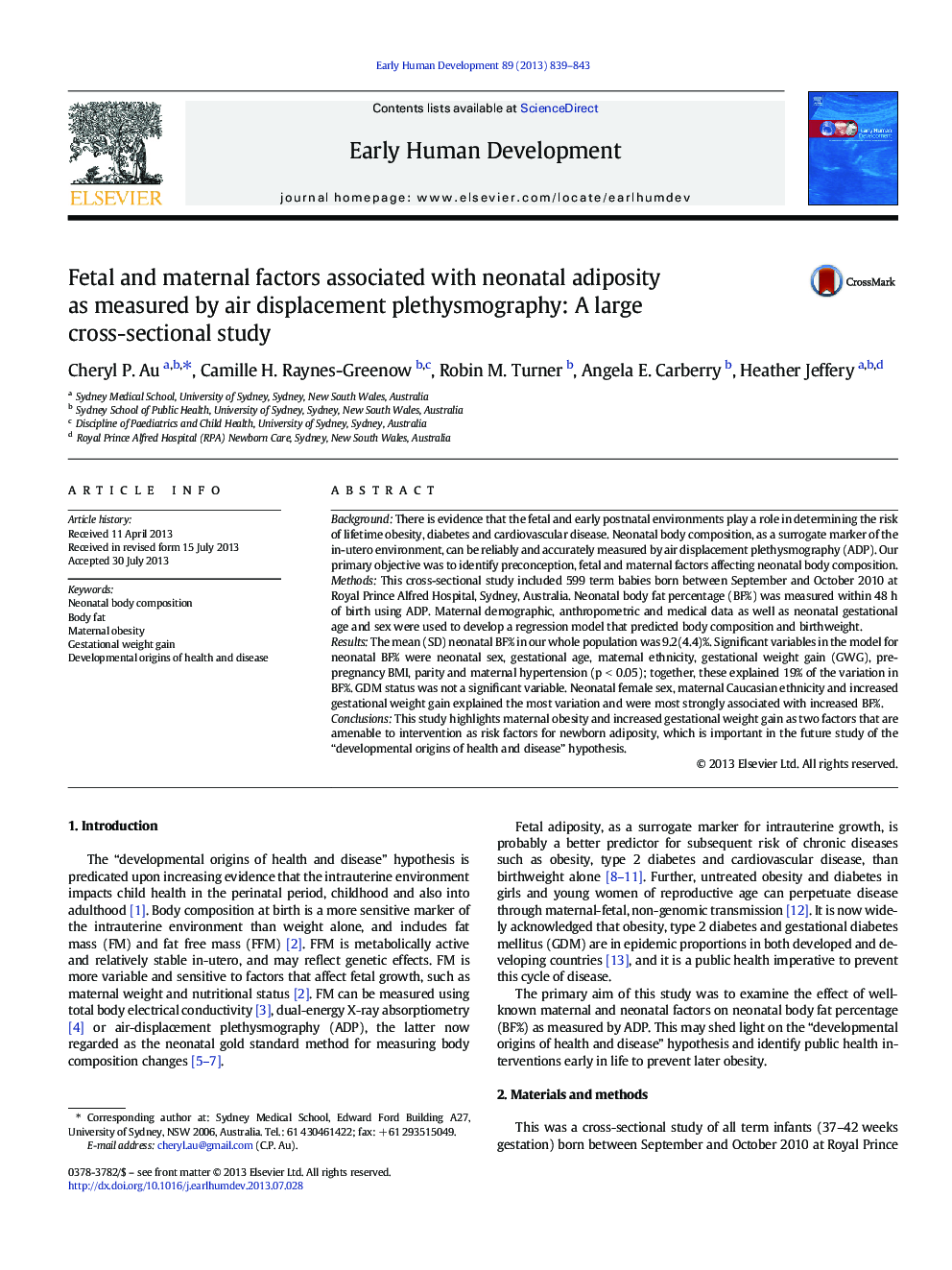| Article ID | Journal | Published Year | Pages | File Type |
|---|---|---|---|---|
| 6171906 | Early Human Development | 2013 | 5 Pages |
BackgroundThere is evidence that the fetal and early postnatal environments play a role in determining the risk of lifetime obesity, diabetes and cardiovascular disease. Neonatal body composition, as a surrogate marker of the in-utero environment, can be reliably and accurately measured by air displacement plethysmography (ADP). Our primary objective was to identify preconception, fetal and maternal factors affecting neonatal body composition.MethodsThis cross-sectional study included 599 term babies born between September and October 2010 at Royal Prince Alfred Hospital, Sydney, Australia. Neonatal body fat percentage (BF%) was measured within 48 h of birth using ADP. Maternal demographic, anthropometric and medical data as well as neonatal gestational age and sex were used to develop a regression model that predicted body composition and birthweight.ResultsThe mean (SD) neonatal BF% in our whole population was 9.2(4.4)%. Significant variables in the model for neonatal BF% were neonatal sex, gestational age, maternal ethnicity, gestational weight gain (GWG), pre-pregnancy BMI, parity and maternal hypertension (p < 0.05); together, these explained 19% of the variation in BF%. GDM status was not a significant variable. Neonatal female sex, maternal Caucasian ethnicity and increased gestational weight gain explained the most variation and were most strongly associated with increased BF%.ConclusionsThis study highlights maternal obesity and increased gestational weight gain as two factors that are amenable to intervention as risk factors for newborn adiposity, which is important in the future study of the “developmental origins of health and disease” hypothesis.
